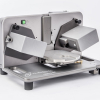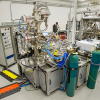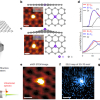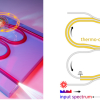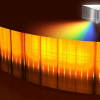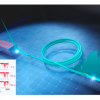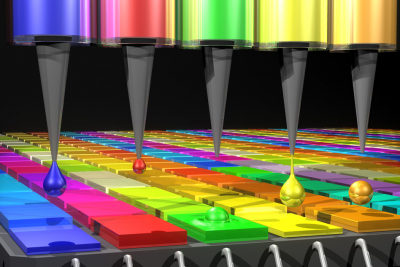
MIT scientists have shown they can create spectrometers small enough to fit inside a smartphone camera, using quantum dots, as reported in Nature. This work also represents a new application for quantum dots, which have been used primarily for labelling cells and biological molecules, as well as in computer and television screens.
“Using quantum dots for spectrometers is such a straightforward application compared to everything else that we’ve tried to do, and I think that’s very appealing,” says Moungi Bawendi, the Lester Wolfe Professor of Chemistry at MIT and the paper’s senior author.
Quantum dots, a type of nanocrystals discovered in the early 1980s, are made by combining metals such as lead or cadmium with other elements including sulphur, selenium or arsenic. By controlling the ratio of these starting materials, the temperature and the reaction time, scientists can generate a nearly unlimited number of dots with differences in bandgap, determining the wavelengths of light that each dot will absorb.
However, most of the existing applications for quantum dots do not take advantage of this huge range of light absorbance. Instead, most applications exploit quantum dots’ fluorescence—a property that is much more difficult to control, Bawendi says. “It’s very hard to make something that fluoresces very brightly,” he says. “You’ve got to protect the dots, you’ve got to do all this engineering.”
Scientists are also working on solar cells based on quantum dots, which rely on the dots’ ability to convert light into electrons. However, this phenomenon is not well understood, and is difficult to manipulate.
On the other hand, quantum dots’ absorption properties are well known and very stable. “If we can rely on these properties, it is possible to create applications that will have a greater impact in the relative short term,” Bao says.
The new quantum dot spectrometer deploys hundreds of quantum dot materials that each filter a specific set of wavelengths of light. The quantum dot filters are printed into a thin film and placed on top of a photodetector such as the charge-coupled devices (CCDs) found in mobile phone cameras. The researchers created an algorithm that analyses the percentage of photons absorbed by each filter, then recombines the information from each one to calculate the intensity and wavelength of the original rays of light.
The more quantum dot materials there are, the more wavelengths can be covered and the higher resolution can be obtained. In this case, the researchers used about 200 types of quantum dots spread over a range of about 300 nm. With more dots, such spectrometers could be designed to cover an even wider range of light frequencies.
“Bawendi and Bao showed a beautiful way to exploit the controlled optical absorption of semiconductor quantum dots for miniature spectrometers. They demonstrate a spectrometer that is not only small, but also with high throughput and high spectral resolution, which has never been achieved before,” says Feng Wang, an associate professor of physics at the University of California at Berkeley who was not involved in the research.
If incorporated into small handheld devices, this type of spectrometer could be used to diagnose skin conditions or analyse urine samples, Bao says. They could also be used to track vital signs such as pulse and oxygen level, or to measure exposure to different frequencies of ultraviolet light, which vary greatly in their ability to damage skin.
“The central component of such spectrometers—the quantum dot filter array—is fabricated with solution-based processing and printing, thus enabling significant potential cost reduction,” Bao adds.










